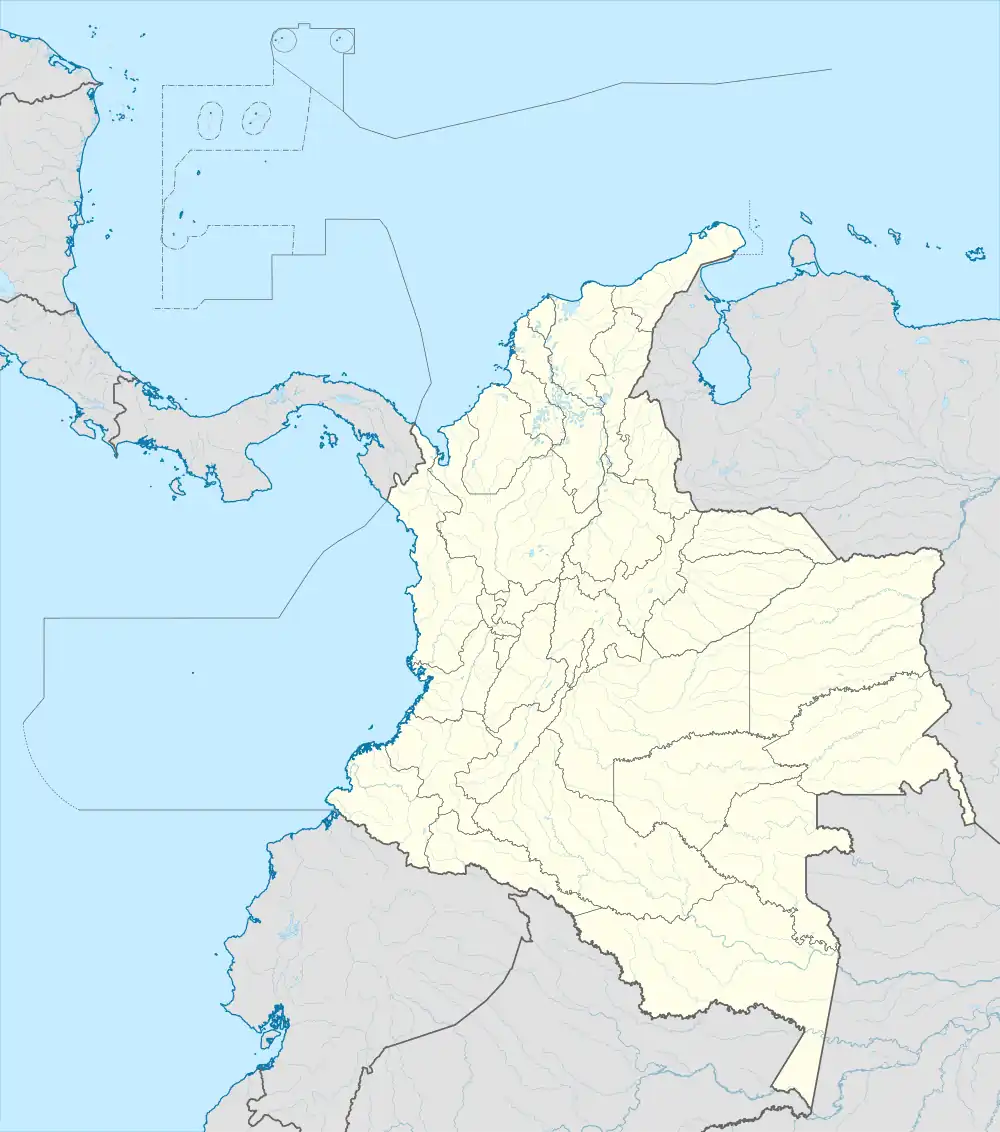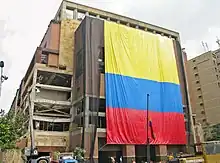2003 El Nogal Club bombing
| El Nogal Club bombing | |
|---|---|
 El Nogal Club 2003 El Nogal Club bombing (Colombia) | |
| Location | Bogotá, Colombia |
| Date | 7 February 2003 |
| Target | El Nogal club |
Attack type | Car bombing |
| Deaths | 36 |
| Injured | 200+ |
| Perpetrators | |
The 2003 El Nogal Club bombing was a terrorist attack that occurred in Bogotá, Colombia. On 7 February 2003, a car containing 200 kg of explosives that was parked in a garage on the third floor of the multi-story El Nogal club, an elite, high-class social and business club, exploded, killing 36 people and wounding more than 200. There were approximately 600 people in the building at the time of the explosion. The attack was the worst in Colombia for more than a decade.[1][2]

No group publicly claimed responsibility for the bombing. The United Nations adopted Security Council Resolution 1465 on 13 February 2003 condemning the attack.
Colombian Vice President Francisco Santos Calderón blamed the guerrilla group FARC, saying that there was "not the slightest doubt" that they were responsible and that the government had enough evidence of its involvement. Colombian authorities and investigators, with the aid of ATF members from the U.S., inspected the scene and the remains of the car bomb. Colombian prosecutors linked FARC to the bombing through the participation of, among others, John Freddy Arellan, a squash instructor who died in the bombing. According to the government, Arellan had recently acquired membership in the club and drove the car containing the explosives, a vehicle which had been bought in late 2002 using false documents, into the parking area. The government claimed Arrellan would have been employed by FARC's "Javier Paz", not knowing that the bomb would be detonated with him and his uncle still inside the club.[3][4][5]
On 10 March 2003, FARC denied any responsibility in the attack and described it as "state terrorism", claiming that the government of Colombia planted the bomb in order to unite the country against them.[6][7]
In March 2008, Colombian authorities released documents said to be found in a computer belonging to the slain FARC commander "Raúl Reyes", including a 13 February 2003 message in which "Reyes" called the attack a "formidable act" and mentioned the "political convenience of denying responsibilities".[8]
References
- "At least 32 killed in Colombia club blast". CNN. 8 February 2003. Retrieved 6 July 2007.
- "Colombian police raid hit by explosion". BBC. 15 February 2003. Retrieved 6 July 2007.
- http://64.146.17.242/stories/030203/wor_0302030966.asp%5B%5D
- Asi volaron El Nogal
- Boletín de prensa No. 237 Archived 28 September 2007 at the Wayback Machine
- "Colombia rebels deny club attack". BBC. 11 March 2003. Retrieved 6 July 2007.
- "FARC denies club bomb involvement". CNN. Archived from the original on 14 September 2007. Retrieved 6 July 2007.
- "PC de 'Reyes', prueba reina en casos de diputados y El Nogal". El Tiempo. Retrieved 28 March 2008.